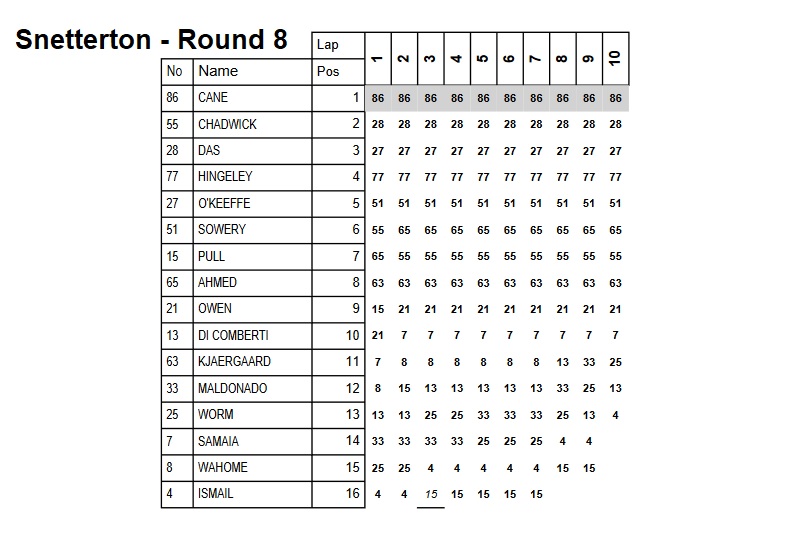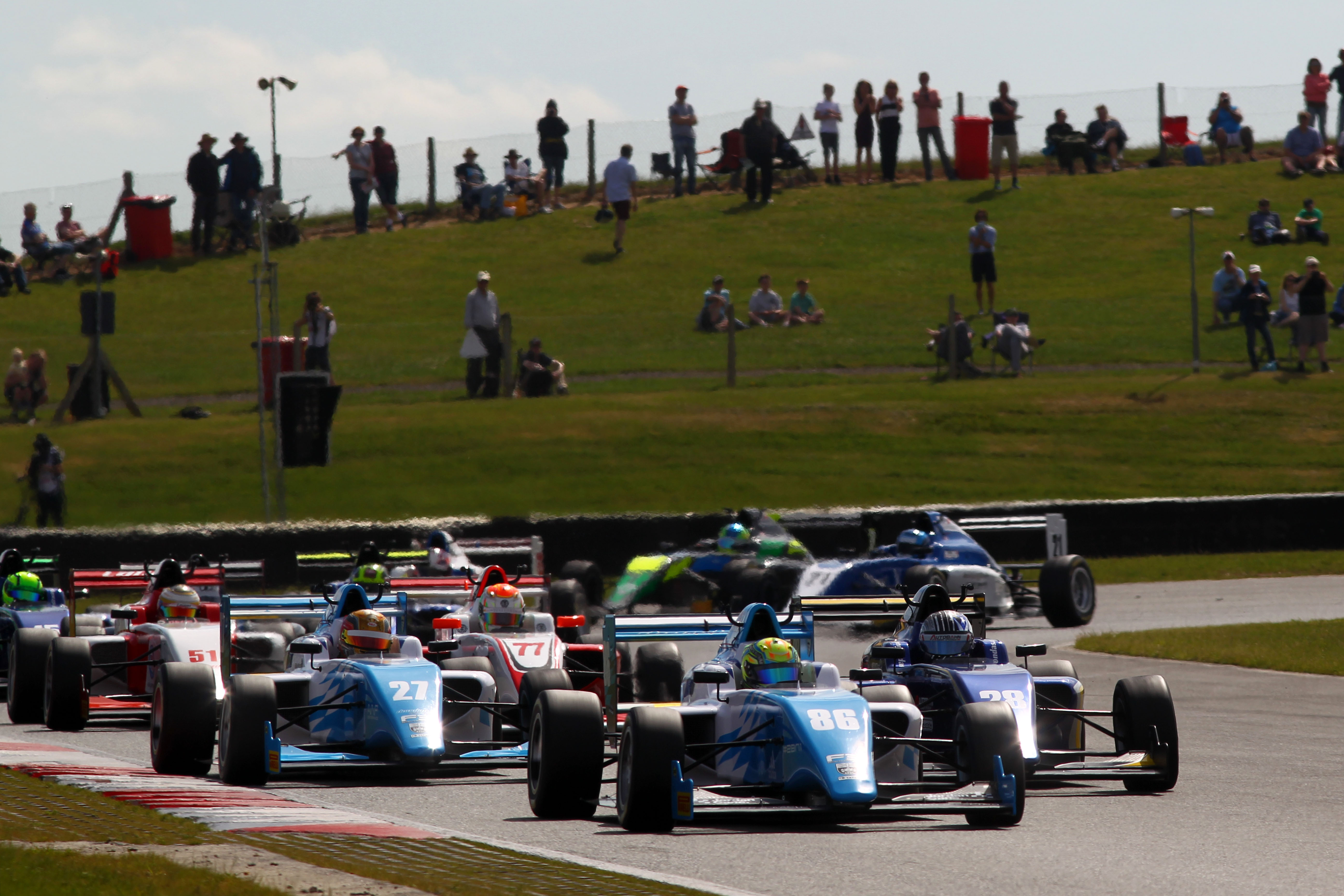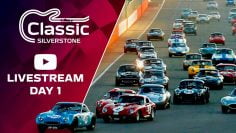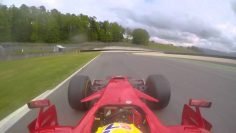
Opinion – Why the New BRDC British F3 Points System Won’t Work
For those that have been out of the loop the last week, the BRDC British F3 Championship, in a bid to increase the spectacle, changed the points system for the second race of a weekend.
Prior to this, the reverse grid event had simply seen the top eight swapped with 25 points being awarded to the winner instead of the regular 35. While the start of these races were always a show as slower drivers tried to hang on to the lead, after the third lap, often settled down with minimal action. This was largely because the grid for the final event is set on fastest times and by consolidating your position, a driver was free to push for a fast time.
In an attempt to increase interest amongst fans, a number of changes were made. These included reversing all the finishers (with a fastest lap within 103%,) not just the top eight, and awarding points for how many positions a driver gained. In exchange, the winner would only receive 20 points and with the top 20 all scoring under BRDC F3 rules it means they also eliminate the extra points advantage for the top 3.
[table id=3 /]
The chart above goes some way to explaining the mess of the race two format, though drivers will still need to set a fast time for the race three grid.
Ultimately this issue of fastest lap will kill the system.
While race two did throw up some quite bizarre grids, notably at Silverstone, where all three Fortec Motorsports cars lined up at the front, it simply allowed Ben Hingeley to take an easy win, while Manuel Maldonado, who had started on pole, fell down to eighth with Kjaergaard finishing last in the other Fortec.
The problem was, this race, that also featured Toby Sowery’s rise through the order to second, was an exception. For round 8 at Snetterton, the top ten exchanged no positions after lap 2 and that would have just been the first lap had Enaam Ahmed not overtaken Jamie Chadwick on the second tour and James Pull hadn’t dropped down the order due to a puncture.
The sad reality is that this became all too common.

It’s arguably not because of driver complacency either. At Rockingham, after being punted to the back in the opening lap, Ahmed found it hard to actually work his way back up the order. The 17-year-old had won all four races so far, but only managed to gain four places past backmarkers.
It’s hardly as if Ahmed lacked the pace and with teammate and championship rival Cameron Das leading, he had every incentive. While he was gifted two further positions due to time penalties, it wasn’t easy for the eventual runaway champion.
Das himself ran into a similar issue at Snetterton where he spent the ten lap race stuck behind rookie and leader Jordan Cane. He was within a second for the first seven laps, but was unable to overtake, despite racing for the quicker team. With rival Ahmed down in sixth he should have leapt at the opportunity.
The point is, that as much as Jonathan Palmer did his best to improve the cars during their second generation, the Tatuus-Cosworth MSV F4-016 has made it harder to overtake, especially around national circuits.
The long straights at Silverstone and Spa-Francorchamps are easier for the drivers, with the latter providing some of the most exciting races of recent years. The issue; it’s almost impossible for the car to run in dirty air, which is exaggerated at Oulton Park and Snetterton due to the cars greater reliability on aerodynamics.
Points to encourage overtaking is all well and good, but without the equipment to make a sufficient move, it becomes obsolete.
Overtaking in the first lap hasn’t been an issue, but unlike Formula 1 or perhaps more extremely, like NASCAR, you cannot avoid this issue with more rolling starts or safety car restarts, because the queue still suffers from the dirty air problem. After safety cars, it’s been rare to see British F3 cars jumping a number of positions.
So what should be done?

Well, the obvious answer is get a new car. But single-seaters are expensive and the cost would have to be paid for by the driver, which there isn’t the market for.
One option is to change the circuits. The cars perform better at Silverstone and Spa and MSV have already taken one step in the right direction by adding a second Silverstone round. More extreme would be to get rid of circuits like Snetterton, Oulton Park or Rockingham, but this seems like a ridiculous solution as there are few viable replacements to help the racing.
While Thruxton would be a good alternative, this would require the series to breakaway from the British GT calendar creating more problems than it solves, especially for marketing and ticket sales.
It may not just rely on the circuits though, but the way the car competes. In a move reminiscent of Formula Ford some years back, shorter races in exchange for more sessions might help.
While all three races are 20 minutes, with overtaking barely occurring after the third lap, much may not be lost in reducing all three to 15 minutes and finding space for a fourth event, putting it in line with European F3 and creating better value for money.
Qualifying could be key. Currently, MSV sets one quali for 30 mins. This often involves drivers setting early benchmarks before returning to the pits and heading back out for a final run.
By reducing the session by 15 mins, this could open up room for another 20 minute race later in the weekend without affecting the support series too much. It could also open up the opportunity to drop the full grid reversal procedure.
But this might all seem too extreme and a reduction past the 20 minute mark could be bad publicity for a series that is competing against 30 minute F4 races and 25 minute Formula Renault events.
In which case, the answer again could come from qualifying. If drivers are simply treating the second race as an opportunity to get a strong place for the finale then why not decide the grids earlier on.
In a number of European series as well as their rival F4 British Championship, the drivers second fastest time is used to settle the grid for the final event. This opens up race two as an opportunity for midfield drivers to get a strong result free of consequences for the final encounter.
[table id=F3-2018 /]
Picking up on the split session idea, why not reduce qualifying to fifteen minutes and hold the second of the fifteen minute sessions after race one (or race two), giving drivers an opportunity to redeem their weekend should it not have gone their way early on, without sacrificing a race to setting strong lap times.
Finally, this also opens up better tyre strategies. The F3’s Pirelli’s has proven one of the more durable of the feeder series with minimal drop-off once it reaches the cliff. Even without changing the tyre compound, this presents new opportunities for drivers to play with their strategy, perhaps even forcing fast drivers to start further down in exchange for fresher rubber.
Then again, maybe this new system will work to a driver’s benefit. As the year comes to an end, those wishing to fight for the championship will be prepared to take more risks and with Silverstone, an easy overtaking circuit providing the season finale, could yet throw up some surprises.
Though in the event this pomp and ceremony is mostly for naught, it might be time to once again reconsider our perceptions on how a series should be run.



![Private: [ID: 71rYi-xncgM] Youtube Automatic](https://motorradio-xijqc.projectbeta.co.uk/wp-content/uploads/2024/08/private-id-71ryi-xncgm-youtube-a-1-360x203.jpg)
![Private: [ID: 1SfHxvC8Doo] Youtube Automatic](https://motorradio-xijqc.projectbeta.co.uk/wp-content/uploads/2024/07/private-id-1sfhxvc8doo-youtube-a-1.jpg)
![Private: [ID: H6XRkf6kROQ] Youtube Automatic](https://motorradio-xijqc.projectbeta.co.uk/wp-content/uploads/2024/07/private-id-h6xrkf6kroq-youtube-a-1-360x203.jpg)
![Private: [ID: Kb6w-qAmKls] Youtube Automatic](https://motorradio-xijqc.projectbeta.co.uk/wp-content/uploads/2023/12/private-id-kb6w-qamkls-youtube-a-360x203.jpg)
![Private: [ID: CcpwYw20k3k] Youtube Automatic](https://motorradio-xijqc.projectbeta.co.uk/wp-content/uploads/2024/07/private-id-ccpwyw20k3k-youtube-a-360x203.jpg)

![[ID: x1SiRC5jhW4] Youtube Automatic](https://motorradio-xijqc.projectbeta.co.uk/wp-content/uploads/2022/04/id-x1sirc5jhw4-youtube-automatic-360x203.jpg)
![[ID: lMZ8lAeLubk] Youtube Automatic](https://motorradio-xijqc.projectbeta.co.uk/wp-content/uploads/2022/04/id-lmz8laelubk-youtube-automatic-360x203.jpg)
![[ID: GAYCcnqyFo4] Youtube Automatic](https://motorradio-xijqc.projectbeta.co.uk/wp-content/uploads/2022/04/id-gayccnqyfo4-youtube-automatic-360x203.jpg)
![[ID: Gg142H296QY] Youtube Automatic](https://motorradio-xijqc.projectbeta.co.uk/wp-content/uploads/2022/04/id-gg142h296qy-youtube-automatic-360x203.jpg)
![Private: [ID: PYDb727riQg] Youtube Automatic](https://motorradio-xijqc.projectbeta.co.uk/wp-content/uploads/2023/02/private-id-pydb727riqg-youtube-a-1-236x133.jpg)




